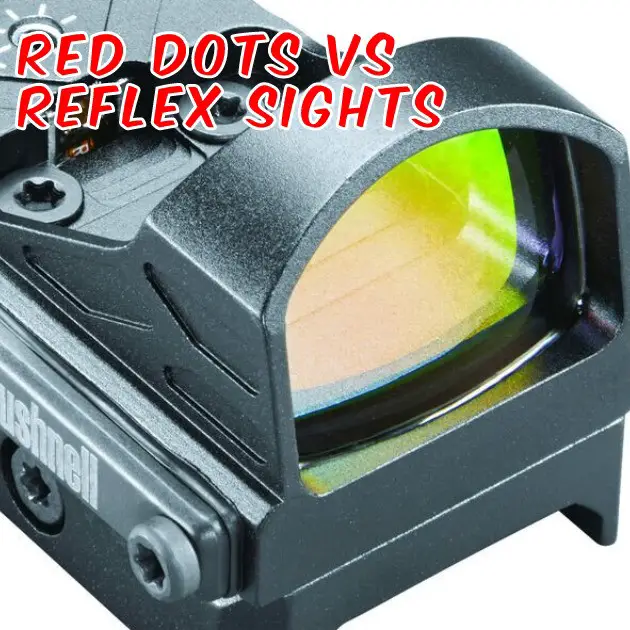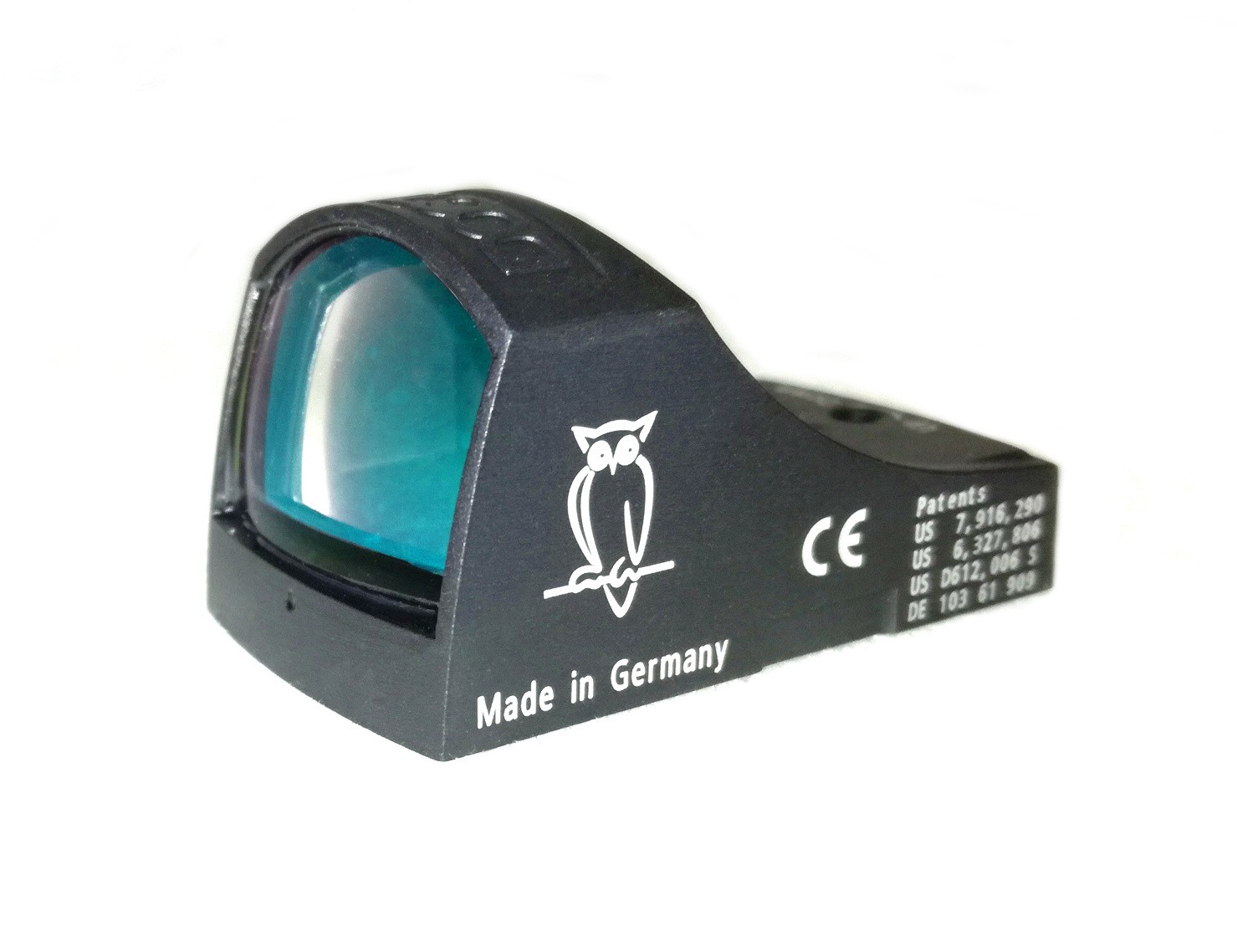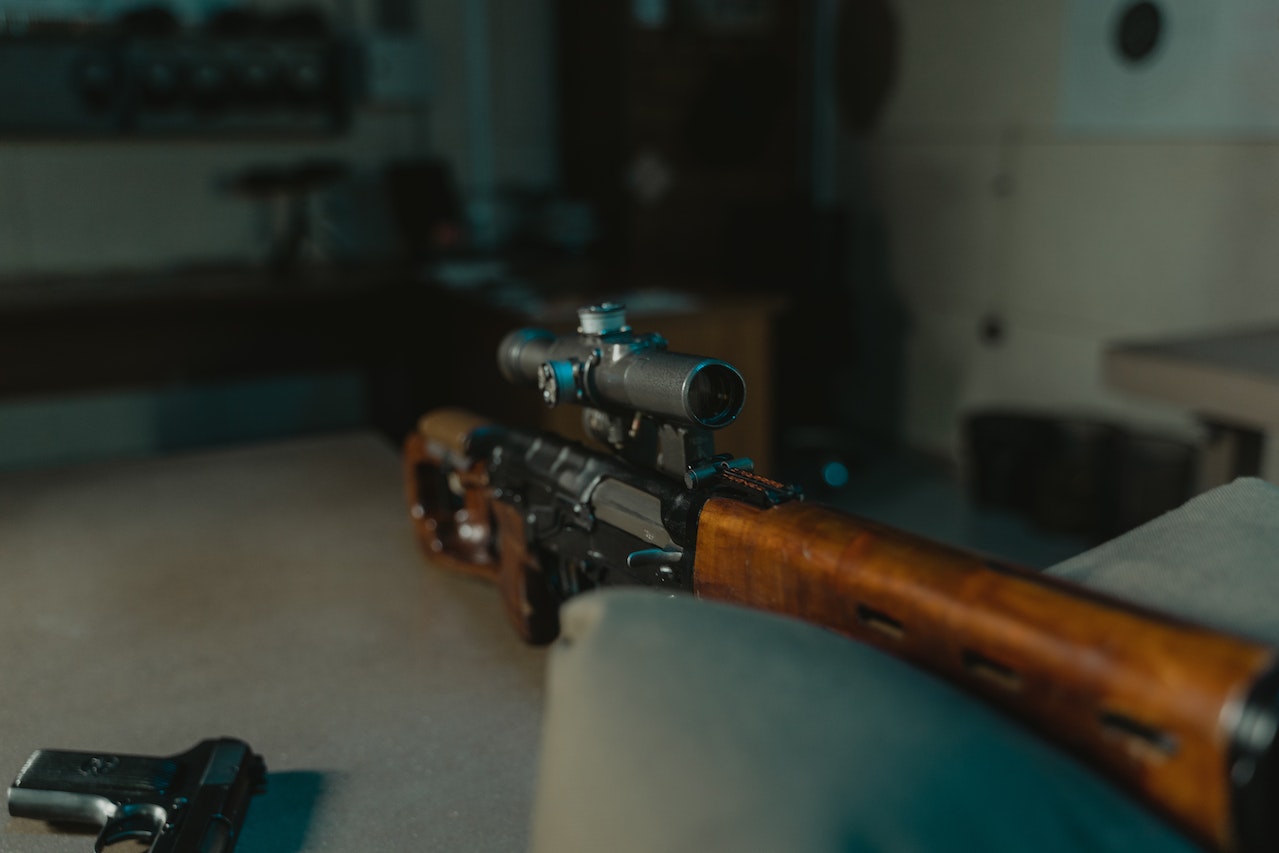It’s a very common question among gun enthusiasts new and old: red dot vs reflex sights, what’s the difference? What do the terms really mean? And are they even two separate kinds of sight at all?
In this article, we’re going to break down the truth about the non-magnifying optic options on the market today, so that you can figure out which might be best for your needs!
Red Dot Sights
No products found.
In reality, “red dot” is a bit of a misnomer, as it doesn’t only apply to sights that have a single red dot in the center. Instead, red dot sights are any that use a manufactured image as an aiming reticle, and they can be any color and are quite often in the shape of a crosshair rather than just a dot.
In fact, “red dot sights” is an umbrella term that covers a large variety of different optics, including reflex sights. It refers to any sight that emits a beam of light to the glass at the front of the optic, which is then reflected back to your eye.
The reflex sight maintains perfect alignment with your weapon, regardless of your eye position. This feature makes the sight virtually parallax-free, significantly reducing the amount of reticle movement caused by changes in your eye-to-sight placement.
Read Also: Top 5 UTG Red Dots for 2023
Most people associate the term “red dot sight” with tube reflex sights, and we’ll talk a little more about those in a moment!
Advantages
- Easy to use
- Quick target acquisition
- Variety of reticle options
- Almost parallax free
- No eye relief
Disadvantages
- A broad term that can refer to different types
- Some are expensive
- No magnification
- Requires a battery to operate
Best Use Cases
Red dot sights place the reticle and the target on about the same optical plane, which means you are able to focus on a single point while you’re aiming. This makes them easy to use, it allows you to pick out targets incredibly quickly, and it means that you can give your full attention to the field of view in front of you.
They are commonly used in the military and police forces as they allow you to have a good awareness of your environment and are ideal for moving targets. They’re also very common in speed shooting sports, and they’re a great option for firearms that have a heavy recoil, as you don’t need to place your eye close to the lens.
Read Also: Best Trijicon Red Dot Sights
Reflex Sights
Reflex sights are not actually a different kind of optic from red dot sights, instead, they are a specific type of red dot sight with particular properties.
By projecting an LED beam onto a front lens and reflecting the image back to your eye, reflex sights create a reticle that appears to be superimposed on your target.
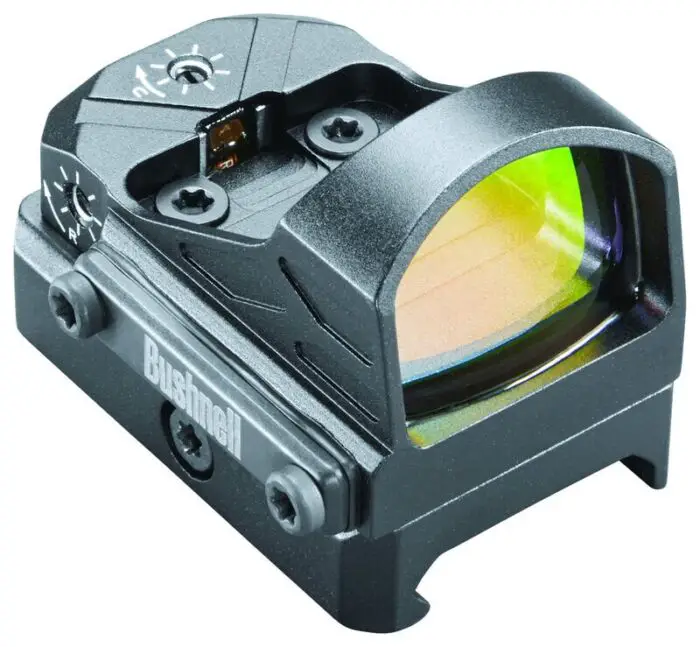
They come in two forms: exposed and tube. Tube reflex sights are what most people think of when they hear the term “red dot sight”. They are in the shape of a small tube, similar to a regular telescopic scope, with a glass lens at either end.
Exposed sights differ slightly since they project the beam of light onto a single lens without housing it within a full tube. It’s slightly easier to quickly acquire your target with an exposed reflex sight, and there is no eye relief so it doesn’t matter how close you are to the sight itself.
Advantages
- Small and lightweight compared to other red dots
- Easy to use
- Generally low-cost
- Quick target acquisition
- No eye relief
- Almost parallax free
Disadvantages
- No magnification
- Limited options for reticles
- Require a battery that can run out and does not have an etched reticle
- A smaller field of view than holographic sights
Best Use Cases
Out of the three main kinds of non-magnifying on the market, reflex sights are typically the smallest, most affordable, and most lightweight vs red dot. You also have a lot of different options for mounts, sizes, and general construction which means they are highly versatile.
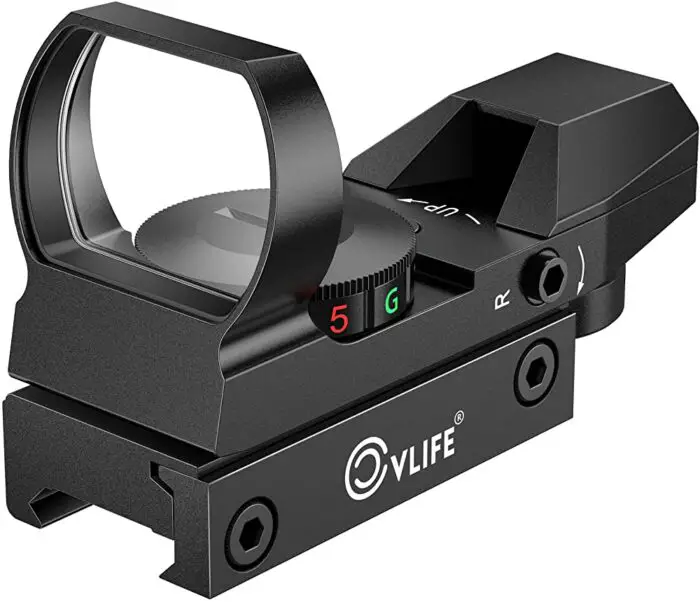
They are also a great secondary or backup sight, and they can even be offset to sit alongside a more powerful magnified sight as well. This isn’t really possible with a prism or holographic sight, since they are so bulky.
Differences Between Non-Magnifying Sights
If reflex and red dot sights are under the same umbrella, what other non-magnifying sight options are out there to choose from? Well, the two most popular alternatives to reflex sights are holographic sights and prism sights.
Holographic Sights
Rather than an LED, holographic sights use a laser that projects onto a series of lenses and creates a visible hologram within the sight. This means that the reticle doesn’t appear to be between you and the target but, instead, appears to be projected onto the target itself.
Furthermore, unlike a reflex sight, you can still see the reticle even if you damage or remove the front glass in exposed sights.
They are a lot more complex that reflector sights, which means they are generally more expensive and bulkier as well. They also have a shorter battery life and do not have an etched reticle for when that battery runs out.
Prism Sights
Prism sights, as the name suggests, contain an internal prism that folds the light before it reaches your eye, which essentially creates magnification.
Unlike holographic or reflex options, the reticle is actually etched into the glass with a prism sight, which means that it is still visible without battery power. They do, however, suffer slightly from parallax error and eye relief, similar to telescopic sights.
For people with astigmatism, prism sights are the best options for getting accurate and comfortable focus.
Conclusion: Red Dot Vs Reflex Sights
So, what is the difference between a red dot sight and a reflex sight? Well, there isn’t one, as reflex sights are actually a type of red dot sight, rather than a completely different option.
Reflex sights are the kind of red dot that is most commonly associated with the term, in that they send a small LED to a lens, which is then reflected back to your eye – creating a reticle that appears to be on the same optical plane as the target behind it.
They have very little parallax error or eye relief, they’re easy to use, they’re lightweight, and they’re pretty inexpensive as well – which is why they are one of the most popular options for enthusiasts today.

An optics enthusiast – I love bird watching as well as wildlife. Originally from South Africa, I moved to the UK at a young age. I love reviewing the latest binoculars as well as traveling. I work as a comms consultant during the day. My plan is to travel across the world so building up to that goal.
Last update on 2024-11-22 at 05:23 / Affiliate links / Images from Amazon Product Advertising API

